











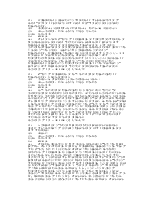

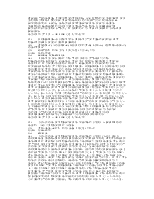
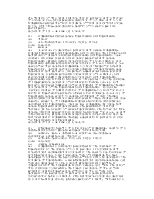
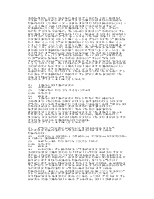


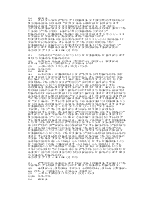
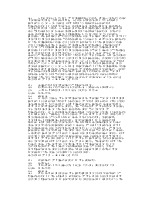
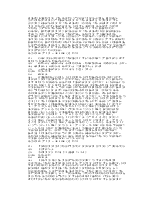
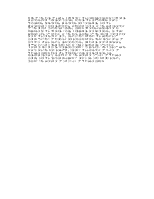
Record 1 of 131 - MEDLINE (R) 1/98-9/98
TI: Antioxidant properties of indapamide, 5-OH indapamide and hydrochlorothiazide evaluated by oxygen-radical absorbing capacity and electron paramagnetic resonance.
AU: Vergely-C; Walker-MK; Zeller-M; Rademakers-JR; Maupoil-V; Schiavi-P; Guez-D; Rochette-L
SO: Mol-Cell-Biochem. 1998 Jan; 178(1-2): 151-5
ISSN: 0300-8177
LA: ENGLISH
AB: The aim of these experiments was to investigate the radical scavenging properties of three diuretics: indapamide (IND) and its major metabolite, 5-OH indapamide (5-OH IND), compared to a reference diuretic, hydrochlorothiazide (HTZ). Electron Paramagnetic Resonance (EPR) was used to determine the scavenging abilities of these compounds on enzymatically produced superoxide radical anion, with 5,5-dimethyl-1-pyrroline N-oxide (DMPO) used as a spin-trap. These experiments revealed that IND and specially 5-OH IND were effective superoxide radical anion scavengers at 0.2 mg/ml. In the second part of these studies, allophycocyanin was used as an indicator of free radical mediated protein damage. In the assay, 2,2'-azobis(2-amidinopropane) hydrochloride (AAPH) was used as a peroxyl radical generator, Trolox (a water-soluble analogue of vitamin E) as a control standard, and the loss of allophycocyanin fluorescence was monitored. The antioxidant effects of the diuretics were expressed in oxygen-radical absorbing capacity (ORAC), where one ORAC unit equals the net protection produced by 1 microM Trolox. HTZ showed no protection up to 100 microM final concentration, whereas IND and 5-OH IND showed linear correlation with respect to concentration when expressed in ORAC units: 5-OH IND induced the highest protection against peroxyl radical. The above observations suggested that IND and 5-OH IND are potent radical scavengers, with the metabolite 5-OH IND having a superior antioxidant potency than IND. By contrast, HTZ had no effect. These radical scavenging properties of 5-OH IND may be of clinical interest for vascular protection and may help to protect the heart from oxidative injury.
Record 4 of 131 - MEDLINE (R) 1/98-9/98
TI: Protective effects of delapril, indapamide and their combination chronically administered to stroke-prone spontaneously hypertensive rats fed a high-sodium diet.
AU: Biagini-G; Zoli-M; Torri-C; Boschi-S; Vantaggiato-G; Ballestri-M; Baraldi-A; Agnati-LF
SO: Clin-Sci-Colch. 1997 Nov; 93(5): 401-11
ISSN: 0143-5221
LA: ENGLISH
AB: 1. Stroke-prone spontaneously hypertensive rats (SHRsp) have been used widely to test agents putatively capable of vascular protection. These animals present an accelerated time course of hypertension and a reduced life-span. When fed a high-sodium diet from the eighth week of life, a further acceleration in blood pressure increase is obtained, and rats start to die after 5 weeks of diet as a consequence of cerebral haemorrhage. In this model, angiotensin-converting enzyme (ACE) inhibitors were repeatedly proved to prevent vascular lesions and death. Notably, this effect was independent of any hypotensive effect. On the contrary, diuretics were shown not to be equally effective. A combination of ACE inhibitors and diuretics, although known to have synergistic effects in the therapy of hypertension, has never previously been tested. 2. Our aim was to study the effects of long-term treatment with the ACE inhibitor delapril (12 mg day-1 kg-1), the thiazide-like diuretic indapamide (1 mg day-1 kg-1), and their combination (12 and 1 mg day-1 kg-1 respectively), on the survival of SHRsp rats fed a high-sodium diet from the eighth week of life onwards. The effects of the treatments on blood pressure, body weight, food and fluid intake, diuresis, proteinuria and the appearance of lesion signs and death were assessed weekly. When control rats reached 50% mortality, they were killed, together with some drug-treated rats, to compare lesions in brain and kidney. The other drug-treated rats continued treatments until 50% mortality was reached in two treatment groups. 3. All drug treatments were able to delay death significantly when compared with control rats, which reached 50% mortality after 6 weeks of salt loading. This event was preceded by a highly significant increase in proteinuria, diuresis and fluid intake that took place 3 weeks after the increase in blood pressure over the initial range. In delapril- or indapamide-treated SHRsp these changes were never seen, even when animals started to die. In the combination-treated group, a significant increase (P < 0.01) in fluid intake and diuresis, but not proteinuria, was observed from the third week of treatment onwards. 4. Treatment with delapril or indapamide did not block the progressive increase in blood pressure as observed in control animals. However, the increase in blood pressure was markedly retarded with
Уважаемый посетитель!
Чтобы распечатать файл, скачайте его (в формате Word).
Ссылка на скачивание - внизу страницы.